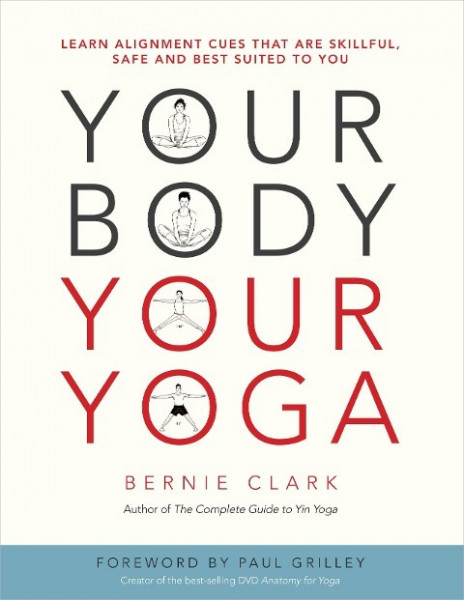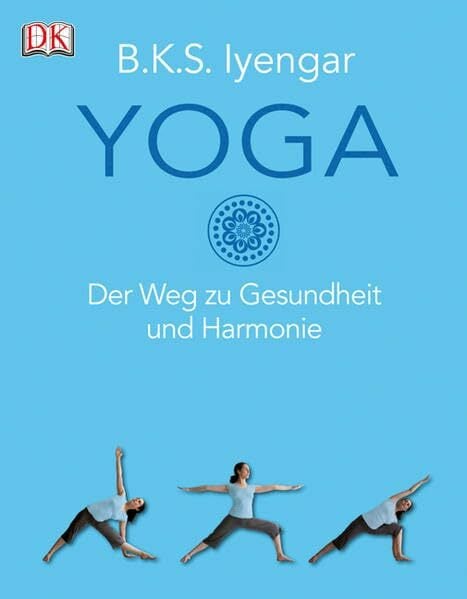
Your Body, Your Yoga
Kurzinformation
inkl. MwSt. Versandinformationen
Artikel zZt. nicht lieferbar
Artikel zZt. nicht lieferbar

Beschreibung
"More important than knowing what kind of pose the student is doing is knowing what kind of student is doing the pose." There is a revolution occurring in yoga today around the alignment paradigm. The concept of one and only one ideal alignment for each yoga posture, taught through an aesthetic focus on how the student looks in the pose, is being replaced by a functional approach that acknowledges not only the intention of the posture but each student's unique biology and biography. In parallel, the paradigm of focusing on the muscles as the limiters and causal agents of movement is being replaced by a broader understanding. The role of fascia is being recognized and incorporated into yoga classes and trainings. Beyond muscles and fascia, there is a wide spectrum of causes for and resistance to motion, ranging from various sources of tension to the qualities of compression. Your Body, Your Yoga is the first book in a series describing the many contributors to limitations in our yoga practice. This book looks at the lower body, and the variety of shapes, movements and potential restrictions to movement in the hips, knees, ankles and feet. Introduced are the causes of resistance to movement, the frequency, extent and consequences of human variation, and their implications for our yoga practice. While short, tight muscles can restrict movement, there are many reasons for a lack of mobility. The causes can be cast into a gradient, called the "What Stops Me? Spectrum”: fascia, ligaments and joint capsules can be tight and tense, while compression arising from the body contacting other parts of the body will also impede movement. How these tissues develop their tension may be due to actions of our nervous or immune systems, or it may be due to our inherently unique body structure. Compression is the ultimate limiter of movement and is variable, depending upon a student's individual skeletal structure. All students are unique to varying degrees, and this individuality determines their ability and progress in their yoga practice and its benefit for them. von Clark, Bernie
Produktdetails

So garantieren wir Dir zu jeder Zeit Premiumqualität.
Über den Autor
Bernie Clark author of the best selling The Complete Guide to Yin Yoga, has had a passion for science, health, sports and spirituality since childhood. He has a degree in science from the University of Waterloo and spent over 25 years as a senior executive in the high-tech/space industry. Bernie has been investigating the path of meditation for over three decades and began teaching yoga and meditation in 1998. He conducts yoga teacher trainings several times a year and aims to build bridges between the experiences of yoga and the understandings of modern science. He is creator of the YinYoga.com website. Bernie lives and teaches in Vancouver, Canada.Paul Grilley, creator of the influential DVD Anatomy for Yoga, began practicing yoga in 1979 after reading "The Autobiography of a Yogi" by Paramahansa Yogananada. He moved to Los Angeles in 1982 where he studied and taught yoga for 12 years. His special interest is the teaching of anatomy. He is the initial popularizer of the style of yoga called yin yoga, and patterns his philosophy on the writings and researches of Dr. Hiroshi Motoyama - a yogi and scientist from Tokyo, Japan. This philosophy integrates the Taoist meridian and acupuncture theories of China with the yogic and tantric theories of India. Paul started his studies of anatomy with Dr. Garry Parker in 1979. He continued his studies at UCLA where he took courses in anatomy and kinesiology. He earned a M.A. from St. John's College, Santa Fe in summer 2000 and an Honorary Ph.D. in 2005 from the California Institute for Human Science for his efforts to clarify the latest theories on fascia and its relevance to the practice of hatha yoga.

- paperback
- 320 Seiten
- Erschienen 2020
- Yellow Kite

- Kartoniert
- 205 Seiten
- Erschienen 2015
- G. P. Probst Verlag

- hardcover
- 221 Seiten
- Drei Eichen Verlag

- Gebunden
- 380 Seiten
- Erschienen 2004
- Via Nova

- Kartoniert
- 341 Seiten
- Erschienen 1993
- Wisdom Publications

- Kartoniert
- 192 Seiten
- Erschienen 2012
- G.P. Probst

- Kartoniert
- 304 Seiten
- Erschienen 2014
- Windpferd Verlagsgesellscha...

- hardcover -
- Erschienen 1995
- Kösel

- Gebunden
- 296 Seiten
- Erschienen 2002
- Via Nova

- Kartoniert
- 128 Seiten
- Erschienen 2013
- Königsfurt Urania


































